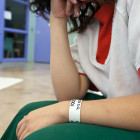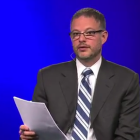
Nearly a decade after Louisiana committed to sweeping changes to the state’s struggling juvenile justice system, some advocates contend the governor and leaders in the state’s Office of Juvenile Justice are “backsliding” on their commitments to reform. Advocates gathered on the steps of the state Capitol last week to unveil a report, “What’s Really Up Doc?: A Call for Reform of the Office of Juvenile Justice.” The 43-page document calls for the state’s recommitment to adopting a more therapeutic approach to juvenile justice based on the Missouri model as well as commitments to increase funding for community-based programs and replace some of OJJ’s top brass, among other goals. “In 2003, the state of Louisiana recognized that juvenile justice reform produced better outcomes for its citizens, youth and families, and made a commitment to this path,” the report said. “A decade later, the state has unfortunately strayed from this commitment, with facility and OJJ practices that are contradictory to the goals of reform.”
The state adopted reform legislation in 2003, also known as Act 1225, on the heels of highly publicized violence within youth detention facilities and litigation with the Department of Justice that found conditions of confinement for some youth in the system unconstitutional. Modeled after Missouri’s system that places an emphasis on rehabilitation and community-based programs rather than detention for troubled youth, Louisiana’s program was dubbed LAMOD – or the Louisiana Model.












